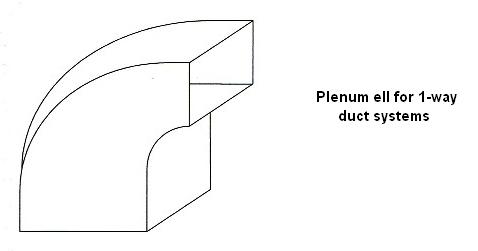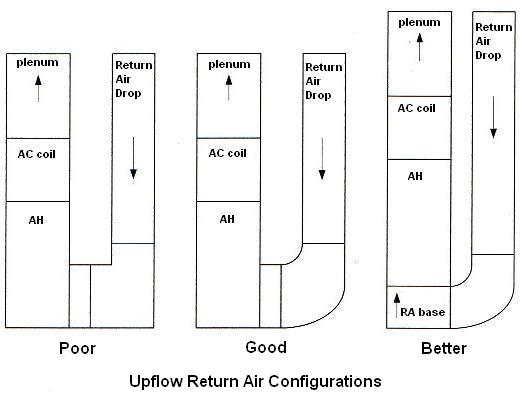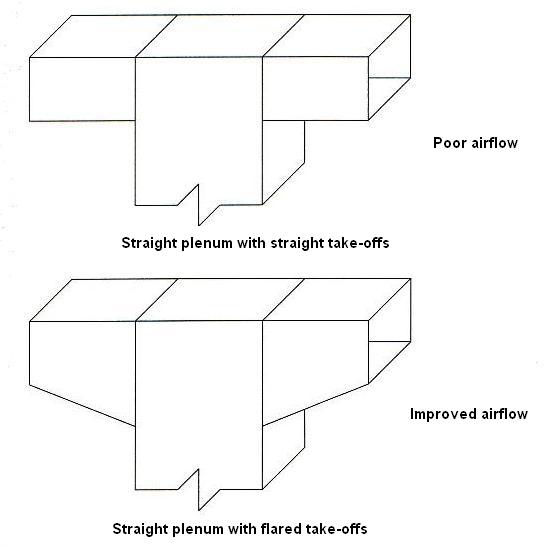|
HVAC for BEGINNERS DUCTWORK
| |||||
|
|
- The supply plenum sits directly on top of the AH/furnace or the AC coil in an upflow configuration. These two examples are very common for two-way duct systems.
- Example 1 with straight take-offs act the same as any square or right angle fitting. Air does not like to make quick 90* turns, therefore example 2 will give you much better airflow.
- Each straight take-off adds 80' to the TEL. Each flared take-off adds only 25' to the TEL.

- The plenum ell is the best approach to one-way duct systems. A one-way duct system can be where the equipment is placed at one end of the structure, or when the ducting feeds one-way out from a mechanical room to a tee which feeds two ways.
- Important! The output end of this plenum ell must be sized to deliver the full cfm (cubic feet per minute) called for by your Manual D calculations.
- Proper air flow will usually entail flaring the plenum out to a larger width or depth to provide the needed cfm output. This can be accomplished with a standard reducer flipped upside down and used as an increaser.
- Rounded throats are a must in this configuration. A straight plenum with a flared take-off is not a good idea here.
Other Related Ducting Pages
HVAC for BEGINNERS: Typical Trunk and Branch Duct Systems
Residential HVAC Duct Drawings
by Geoffrey R. Stoddard, Detroit, Mich.
Duct Fittings: Rectangular Ells, Tees, and Reducers
Rectangular Side Take-offs and Vertical Ells
Multiple Fittings in a Duct System
Basic How-To Ductwork Installation
Leave Hvac Beginners Ductwork and Return to Duct Design main page
Leave Hvac Beginners Ductwork and Return to HOME

Please feel free to link to this page from your website. This page's URL is: http://www.perfect-home-hvac-design.com/hvac-beginners-ductwork.html










